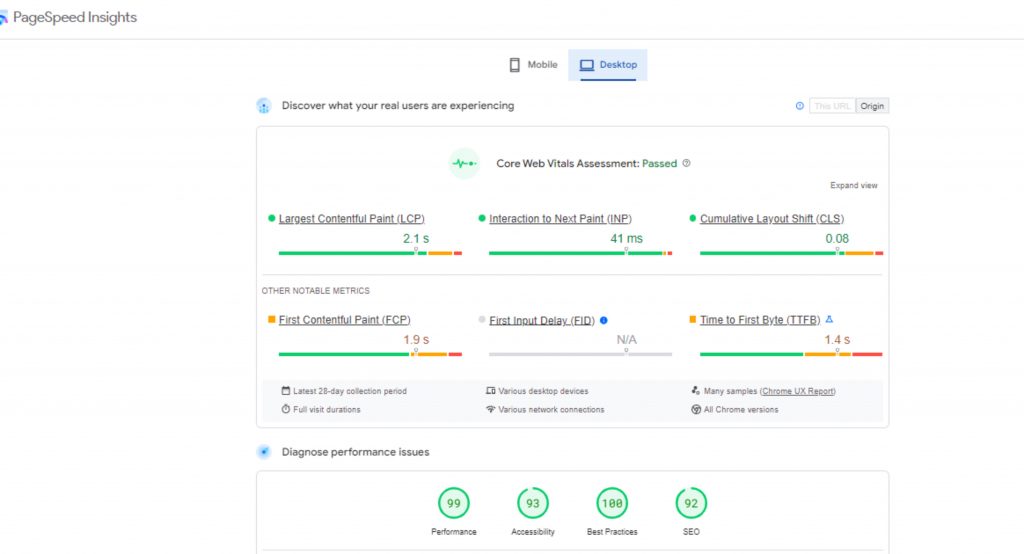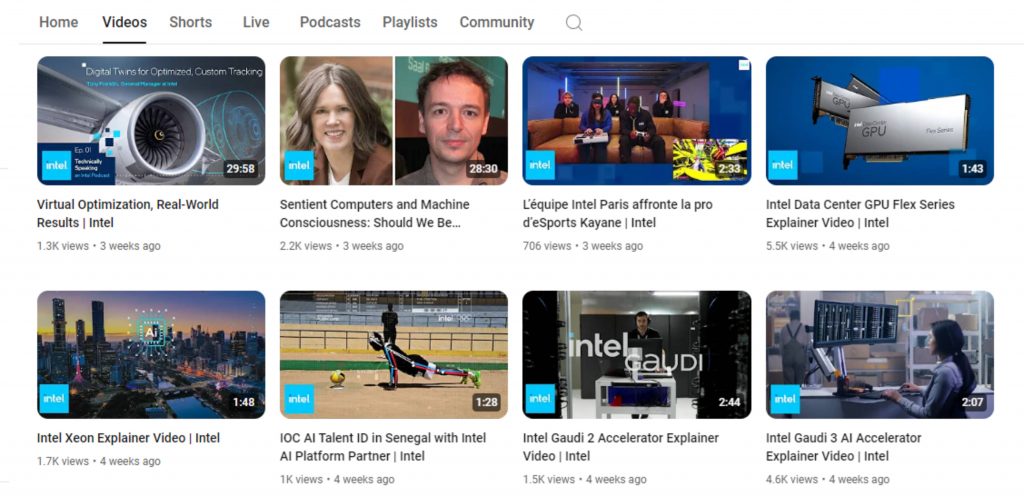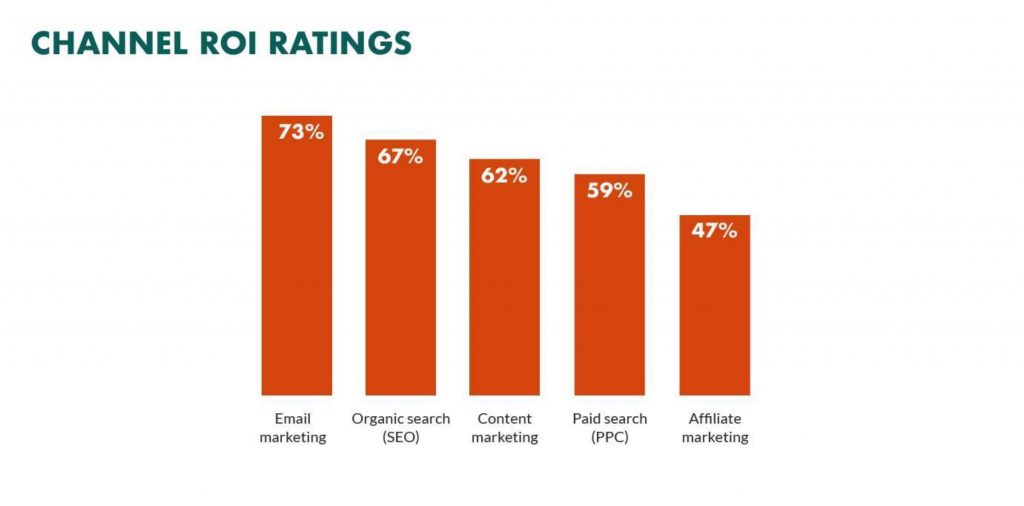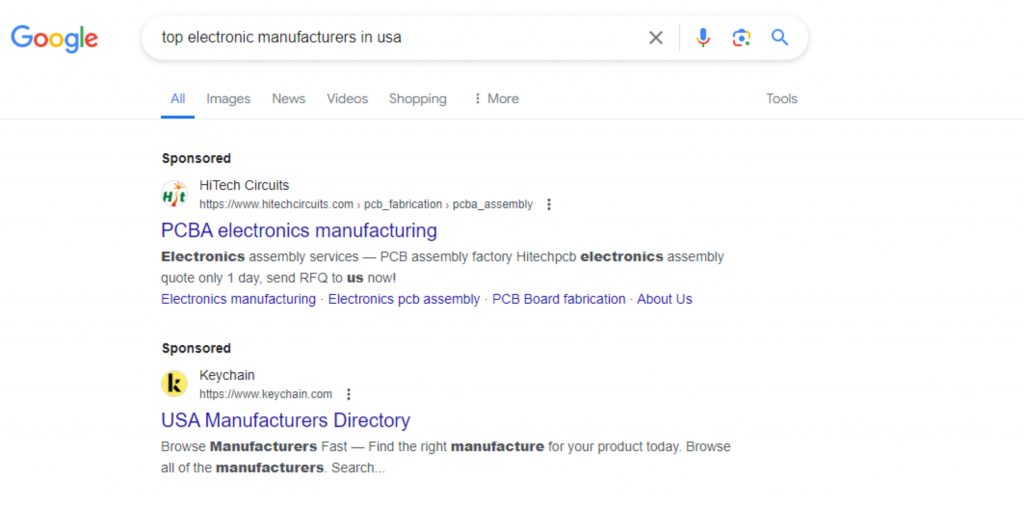
What Is OEM Marketing?: Everything You Need to Know
Slug: oem-marketing
What Is OEM Marketing?: Everything You Need to Know
Digital marketing is changing the manufacturing industry, and customers are the driving force behind this transformation.
Digital-first business models are becoming the norm as millennials move into decision-making positions. These buyers, more than their predecessors, prefer a seller-free sales experience. They use the internet to learn more about businesses and their products.
According to the Gartner Future of Sales report, 80% of B2B sales interactions will happen online by 2025. So you’ll be overlooking valuable lead opportunities if you don’t incorporate digital marketing tactics in your OEM marketing strategy.
This post will explore the top online marketing strategies you should implement to increase your visibility with digital audiences.
What Is OEM Marketing?
OEM stands for original equipment manufacturer. These companies make products to sell to other companies, known as value-added resellers (VAR).
It can be a single part for an end product or the completed product. For example, Intel is an OEM for computer chips found in most PCs and laptops, while Toyota Motor Corp. sells cars to automotive dealerships.
OEMs focus on a B2B (business-to-business) sales and marketing model. They target companies that can’t manufacture the parts they need for their products.
OEMs face unique marketing challenges compared to B2C (business-to-customer) companies.
For starters, B2B companies have multiple decision-makers. You’re not only marketing to the product manager. You also have to convince the CFO and CEO.
Second, the average business-to-business (B2B) sales cycle is four months, with some cycles lasting seven months or more. That means you have to do more than create a flashy advert. Finally, the cost and complexity of OEM products require you to educate and demonstrate value to potential users.
These factors make conversion challenging. That’s where a digital OEM marketing strategy comes in. With it, you can reach customers searching online for solutions and position your business as the best-in-class option.
7 Tips for Designing Your OEM Marketing Strategy
The new generation of decision-makers researches available solutions to their problem before making direct contact. You need a digital marketing strategy to capture this audience.
Here are seven digital tactics you should include in your OEM marketing strategy.
1. Define Key Performance Indicators (KPIs)
It’s difficult to determine the success or failure of a strategy without defining relevant parameters. You can use numerous metrics to measure marketing performance. However, it is crucial to choose the right ones for your business. Your list should include:
- Website traffic: measures how many people visit your industrial website and shows where they’re coming from.
- Time-on-page: measures how long customers engage with your content.
- Bounce rate: measures how many people exit your website without exploring other pages.
- Qualified leads: measures how many high-quality leads you are getting.
- Conversion rates: measures how many leads take the next step in the marketing funnel, i.e., converting into paying customers.
- Cost of acquisition: measures how much it costs to acquire a customer.
- Return on investment (ROI): measures how much money you’re making compared to spending.
In addition to tracking performance, KPIs help manufacturing marketers optimize marketing strategies. For instance, knowing where most traffic comes from ensures you’re not wasting resources and marketing efforts on channels that don’t work.
2. Collaborate With Local Dealers
OEMs like Samsung manufacture and sell their products to end-user customers through branded stores. However, most rely on resellers or local dealers to market and sell their products to targeted customers.
The relationship is mutually beneficial. Dealers have data on customers. OEMs have product information. Fostering OEM and dealer partnerships leads to more streamlined and positive customer experiences.
For example, vehicle health data, repair codes, and parts supply insights can drive retention sales with personalized marketing content.
Creating a co-marketing program allows you to capitalize on partnerships with dealers in two ways. First, you gain access to your partner’s customer base, expanding your reach and (ideally) growing your audience. Second, you can demonstrate thought leadership and position your brand as an industry authority.
Examples of co-marketing campaigns include:
- Content collaboration: Create blogs, videos, or webinars highlighting your combined expertise.
- Co-branded products: Develop a product or service showcasing combined features.
- Social media takeover: Host an event on each other’s social media accounts.
- Cross-promotional discounts: Offer exclusive discounts to your partner’s customers or bundled deals to both audiences.
Co-marketing campaigns help both parties boost brand awareness and sales when done correctly.
3. Improve Search Engine Visibility
Optimizing your industrial website for search engines is the best way to improve your ranking (and visibility) in web searches. Search engine optimization (SEO) can fall into three categories: on-page SEO, off-page SEO, and technical SEO.
On-Page SEO
On-page SEO uses keywords to optimize individual web pages. Keywords are the words or phrases people use to find what they’re looking for online. The goal is to incorporate keywords into your website and content so your target audience finds you on the search engine results page (SERP) for those searches.
Keyword research helps you find the right, high-value keywords for your niche to boost your standing in the SERPs. Here’s how you do it:
- Identify which keywords you rank for and those you don’t.
- Adopt your customer’s perspective to understand what search terms they’re using.
- Analyze which keywords your competitors use and rank for.
- Use keyword search tools like Google Search Console or Semrush.
Below is a keyword search using Google Search Console.

The Queries report shows which keywords drive the most traffic in a given period and highlights which generate the most clicks and impressions.
Off-Page SEO
Off-page SEO focuses on link-building to boost your search engine ranking. It’s not enough to create content with the right keywords in your content. You also have to create quality content. How do search engines like Google determine content quality? Through backlinks.
Backlinks are hyperlinks from one website to another. They inform search engines that other people find your content relevant and informative. While you want lots of links to your website, the quality of those backlinks matters more than the quantity. A link from a high-authority site like Bloomberg is an implicit endorsement of your content.
There are several ways to build links, including guest posting, link insertions, targeting unlinked brand mentions, PR campaigns, and linkable assets.
Technical SEO
Technical SEO optimizes your website’s underlying structure. Google doesn’t determine search results ranking through content alone. It also considers website factors like page load time, site structure, and mobile-friendliness.
The Google PageSpeed Insights tool tests mobile and desktop performance by assessing core web vitals.

You also receive recommendations on what you should change to improve performance.
4. Develop Top-Notch Content
Content is no longer nice to have. It is essential to successful OEM marketing. It drives traffic, determines SEO ranking, and helps establish brands as industry authorities.
The hard sell puts off today’s customers. You must demonstrate value, and content empowers you to do that.
Below are the content formats B2B marketers use.

The most popular are articles or blog posts (94%), videos (84%), and case studies (78%).
You want to create various content for different stages of the customer journey.
- Top-of-the-funnel (TOFU) content outlines solutions to problems.
- Middle-of-the-funnel (MOFU) content compares different solutions.
- Bottom-of-the-funnel (BOFU) content highlights the benefits of your product.
You won’t convert TOFU leads with BOFU content like case studies. Why? First, you haven’t built trust and established authority. Second, that’s not the information they’re looking for.
Search intent is crucial. In other words, are people looking for general or specific information? Instead of showing customer stories to an HVAC company searching for the best air filtration system for cabins, share a roundup article about the pros and cons of available market solutions (including yours).
On the other hand, case studies are beneficial for BOFU leads. They showcase how your solution impacts clients in a real-world context. That information can be helpful to a prospect with a similar issue.
By providing top-notch content, you raise your brand awareness and become a trusted source of information.
5. Harness Social Media Platforms
Social media is more than a way of keeping in touch with friends and family. People use it to discover and research businesses and their products. 93% of marketers use social media to reach target audiences. So the question isn’t whether you should use social media. It’s how you should use it.
LinkedIn is the number one social platform for device manufacturers. 80% of social media leads come from the professional networking website. In addition to lead generation, you can use LinkedIn to:
- Build awareness for products and events
- Manage brand reputation
- Engage customers or build community
- Deliver customer service
A key benefit of social media is native targeting capabilities. Each platform has tools that let you target audiences based on demographic, geographic, and behavioral data. You can even upload data from your CRM and email lists and target lookalike audiences based on your existing customer base.
Don’t limit your social media strategy to LinkedIn. Different platforms are better suited to deliver specific content than others. For example, Intel uses YouTube to engage customers with explainer videos and product demonstrations.

Customers don’t have to scroll through your LinkedIn page to find information. They can use the search bar on your YouTube page or peruse your playlist.
Establishing a robust social media presence gives OEMs a direct channel to communicate, engage, and understand customers. Post consistently, answer questions, and monitor which content produces the best results.
6. Implement Email Campaigns
Email remains one of the top digital marketing channels for two main reasons. First, email gives marketers greater control over message deliverability than other platforms. Second, it delivers the most cost-effective ROI.
It outperforms SEO, content marketing, paid search, and affiliate marketing, as seen below.

With a 3600% ROI, incorporating email is an essential part of your OEM marketing strategy. It allows you to build brand/product awareness, generate leads, promote products, and cultivate customer loyalty. Furthermore, you can create the personalized user experiences customers expect and demand.
Personalization goes beyond inserting customers’ names into email templates. It includes content relevance. A subject line with their name will catch a customer’s attention, but irrelevant content won’t get them to click call-to-action (CTA) buttons.
Rather than sending a single email blast to your entire subscriber list, tailor marketing messages to customers’ interests, purchase history, and customer journey. That way, the customer feels seen and valued, increasing loyalty, retention, and business growth.
7. Employ Search Engine Marketing (SEM)
SEO helps you rank for organic search results, setting you up for long-term success. The problem is that SEO takes time, and sometimes you want faster returns. That’s where search engine marketing (SEM) comes in.
SEM refers to paid search advertising. You don’t have to struggle to appear on the coveted first page of the search results. You only have to pay.
Here’s a summary of how it works: Marketers bid on keywords they want their ads to appear for. When potential customers use those search words, the ad appears at the top of the SERP.
See the example below.

The top results for the above search term are sponsored content.
Paid advertising platforms like Google Ads and Microsoft Advertising drive traffic to your industrial website quickly.
But pay-per-click advertising gets expensive fast. After all, you pay every time someone clicks the ad. You need to make sure SEO best practices and conversion rate optimization tactics are in place. The cost per click is too high to lose a potential customer due to slow page speed or irrelevant content.
Also, you probably want to run an SEO campaign on the side even as you pay for clicks. This can help reduce your cost per lead down the road.
Conclusion
The manufacturing landscape is evolving. The new generation of B2B decision-makers is taking a digital-first, content-rich approach to buying. Consequently, OEMs must incorporate digital marketing into their marketing strategies.
We shared seven tactics for reaching digital audiences. If you learn two things from this article, let them be content and keywords. Compelling content will educate and convert potential customers, and relevant keywords will place your content in front of the right audience.
In the past, OEMs reached target audiences through trade shows, referrals, and magazine articles. By all means, continue doing this. Digital marketing isn’t supposed to replace traditional tactics. It’s an add-on to reach online audiences.



